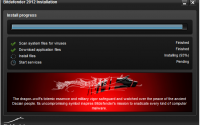6 Tips To A Successful Conference Meeting
According to Atlassian, 60 percent or less of work time on average is used productively – meaning, almost half of the time spent at work requires optimization – and a huge portion of that is spent at daily meetings.91% of meeting members daydream in meetings, while 73 percent do unrelated work. Harvard asserted as far back as 2004 that 80 percent of a business’ attention is directed to issues that account for about 20 percent of the company’s long-term value.
If your company holds daily briefings, you’ve got your work cut out for you. Meetings are statistically-speaking considered black holes for time, unless you as a manager step up and take direct, harsh and critical action to drastically change the way you hold meetings – and then stick to it.
One of the measures companies have been taking to reduce costs and time is to hold meetings virtually, through telepresence or a video conference call, with cloud-based technology offered by services like Blue Jeans Australia. It helps cut down on travel expenses and time wasted moving around in the office, as everyone can join in from any compatible device – but it’s not a whole solution. If you want to eliminate wasted meeting time, take these six tips to heart.

1) Make a Concise List of Issues to Tackle
Economist John Kenneth Galbraith once said: “meetings are indispensable when you don’t want to do anything.” To avoid falling into the meeting trap, you have to ensure you keep a clear view on your goals – discuss what you want to discuss, and make sure you’re not discussing anything else.
It’s bad for a meeting to veer even slightly off topic. All it takes is one sentence, one trigger, and a meeting can get derailed horribly. Be a strong moderator, and a strict manager – make you list of issues to tackle that day, and stick to it.
Be realistic with the issues. Don’t cramp unnecessary topics, or too many points of discussion into a meeting – that way, all you’ll do is cut down on the amount of time people have to respond to the points made in the meeting.
2) Make Sure to Prepare Visual Aids, Such as Charts or Other Visual Media
Visual media is simply absorbed better by the brain than text, or just audio. Set up slideshow presentations, or do a screen sharing of your client’s website to explain what you need your team to do. Share video files and images, or ask a client to prepare a video instead of sending their request via text.
Doing this will ensure your meeting members have a bit more information to soak up, and it’ll help them pay better attention as well.
3) Give Meeting Members Allotted Times for Input and Improvement
In a meeting, one of the biggest causes for people to fall out of paying attention to the situation is a lack in involvement. Why should members pay attention to a meeting when it doesn’t seem to take into account their opinions?
That having been said, business is business – and filibustering has no place in a meeting. Give members an allocated amount of time, and force them to stick to it if they want to contribute to the meeting. Think of it as a serious political talk show, with yourself as the manager and moderator.

4) Make Sure to Have a Target Time, and Hit It
This is vastly important. Set up an estimated time for your meeting – and then, at all cost, stick to it. Letting a meeting go on for just a few more minutes is a slippery slope to losing control of your meetings – set a time to begin the meeting, set a time for everyone to speak up, and set a time to end it. And again, for the last time – stick to it. Three years ago, a consulting firm called Get a Klu figured that 31 hours of work are lost to meetings.
However, that doesn’t mean you should try and stretch meetings out. If you managed to discuss all of your points for the day in 45 minutes, but your planned meeting time is an hour, don’t let your team sit around for the next fifteen minutes.
5) Keep Meetings Short, but Frequently Follow Up
Follow ups are important. They’re what connect the separate realms of the actual meeting, with the work to be done afterwards. After a conference call is complete, and members return to doing their work, send them a memo or an email with a list of pointers to remember from the meeting, or a specific task assigned to them in regard to what was discussed during the meeting.
6) Ban Unrelated Technology and Activities
Unrelated activities take up too much attention to be permissible in a meeting. This goes for chatting, checking emails and messages, looking up the news, or browsing Reddit. Be strict with that’s okay and what isn’t okay during a meeting – and if you’re conducting a conference call, keep everyone’s attention on the issues at hand.
Finally, remember to give your team their space. A meeting is there for the team to get together and discuss — but after it’s over, members need the peace and quiet to focus on their work.



